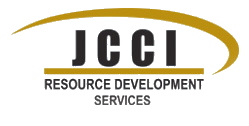Gifts Versus Grants
Many in the nonprofit world use the terms “gifts” and “grants” interchangeably, so if you’re second-guessing yourself or are confused about the terminology many nonprofits and funders alike are using, you’re not alone. In fact, larger nonprofits have developed and published guidelines to help their staff distinguish between gifts and grants. JCCI has witnessed a growing number of private and corporate funders that previously offered “gifts” to nonprofits that are now moving to a grant model for their philanthropic support. We’ve also worked with clients who were making unsuccessful attempts to reshape their priorities to fit a grant’s stated goals and objectives. Gifts and grants are two distinct philosophies of giving, and—accounting principles aside—understanding the philosophical differences between the two can help you effectively research prospective donors and respond to funding opportunities. Here’s how JCCI distinguishes between gifts and grants.
Gifts
Nonprofits benefit greatly from gifts that help them sustain general operations or special programming. A gift philosophy is one without strings attached—at least not in the way that grants have strings attached to the funds. Instead, donors who give gifts are supporting an organization without a preconceived expectation of specific outcomes. Gifts may be restricted to certain purposes, but within those constraints, gifts support organizational needs and priorities. Gifts don’t support a funder’s goals and priorities, though the funder’s goals and the nonprofit’s goals are usually closely aligned. While you may submit a stewardship report and let your donor know how your organization used the gifted funds, the organization isn’t held accountable for achieving funder-identified goals. You may also provide donors with a budget and breakdown of expenditures, but donors who provide gifts are typically more interested in overall impact rather than with detailed accounting and outcomes. Gifts are often smaller amounts than grants, but, collectively, gifts can be the mainstay of nonprofit operations.
Grants
A grant philosophy, on the other hand, is very much tied to a funder’s goals and objectives. Government grant programs, for instance, typically provide funding as a means of accomplishing specific identified goals that the government entity cannot accomplish independently. A grantor seeks an organization with the expertise and capacity to carry out work—work that the grantor is unable to carry out itself—that achieves the grantor’s goals rather than the grantee’s goals. As such, RFPs and other grant announcements include the rationale for offering grant funding and provide a detailed scope of work expected and identified goals and objectives that grantees should achieve. Ideally, applicants for grant funds share the funder’s goals and are already conducting work that aligns with those goals. Ultimately, though, grant funders expect grantees to make a pre-determined impact that accomplishes the funder’s agenda.
Grants are often large amounts, and grantors may provide funding for grantees to conduct projects over several years. Grant agreements stipulate reporting requirements that include a detailed accounting of all expenditures and demonstrate the impact of grant-funded activities. If grantees wish to use funds in a manner that is different from information in their initial proposal, grantors reserve the right to approve this type of change, and grantors may ask that grantees return funds if agreed-upon conditions are not met or if funds are unspent.
Mixed Messages
No wonder many in the nonprofit world are confused over terminology. Funders themselves are sending mixed messages. In the current climate, more and more funders have their own agendas. Many corporate and private foundations are developing giving programs that look and act much more like grants than gifts, though their donations are still, technically, gifts. While providing gifts to nonprofits, these funders are also adopting grant strategies such as pre-defined goals and objectives that they expect nonprofits to achieve. Additionally, many funders are now requesting components of proposals that typically appear in grant applications. For instance, more funders expect gift requests to include logic models, work plans and timelines, and evaluation plans. These items, when thoughtfully constructed, should strengthen a nonprofit’s development of specific projects and lead to improved outcomes, so having your team consider these application elements—whether requested or not—can often help you craft a better case for support whether through grants or gifts.
Finding the Right Fit
Since more funders are taking a mixed philosophical approach to funding and have more pre-defined agendas, nonprofits must take even more care to research the best prospects for funding. In an ideal world, nonprofits can identify projects and work already underway that aligns with philanthropic goals of both private and corporate foundations as well as government entities. Adhering to your organization’s mission rather than trying to develop projects that fit a funder’s priorities, though, will always be the best recipe for funding success.





